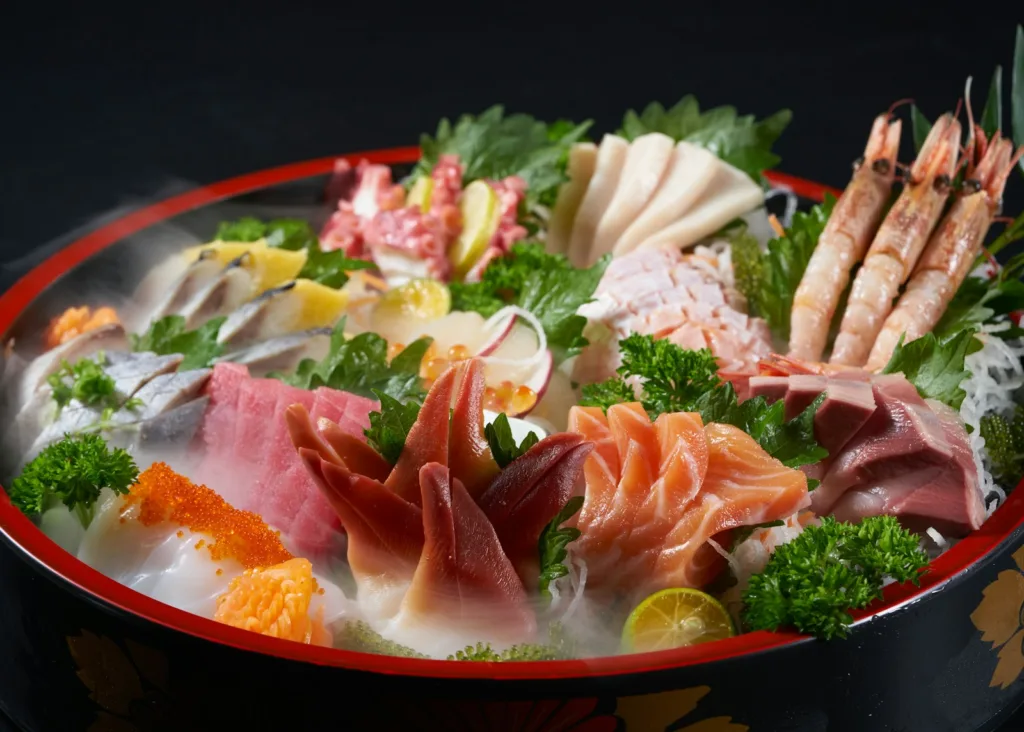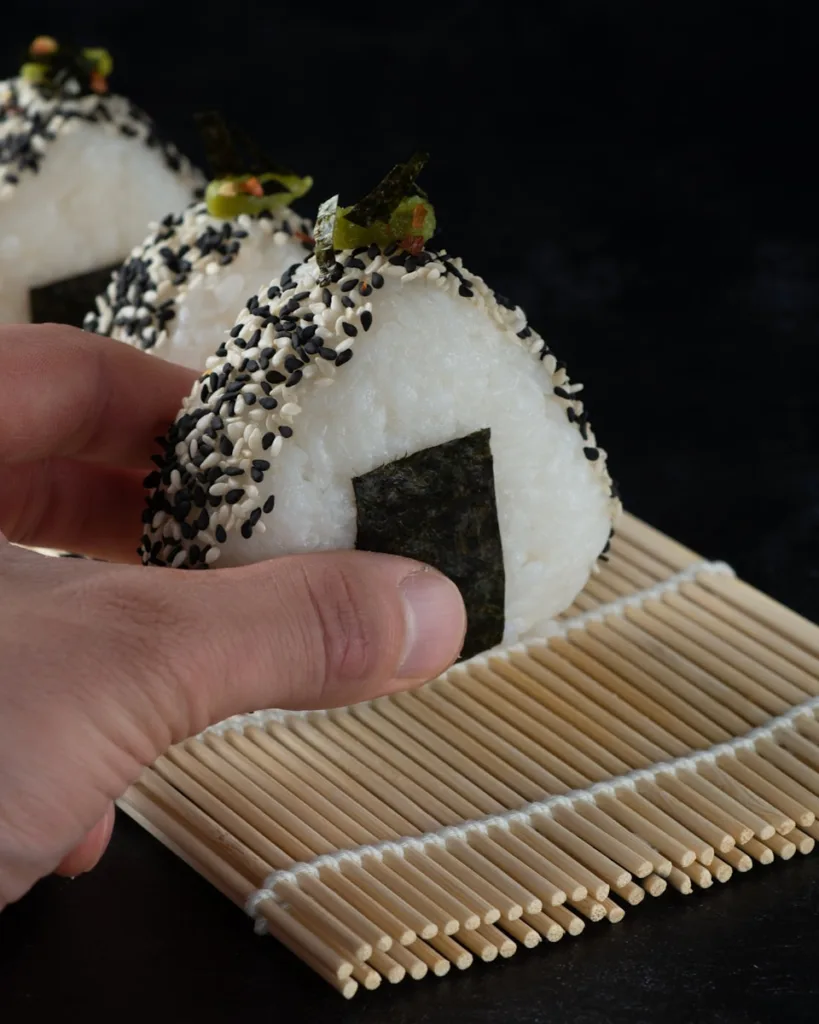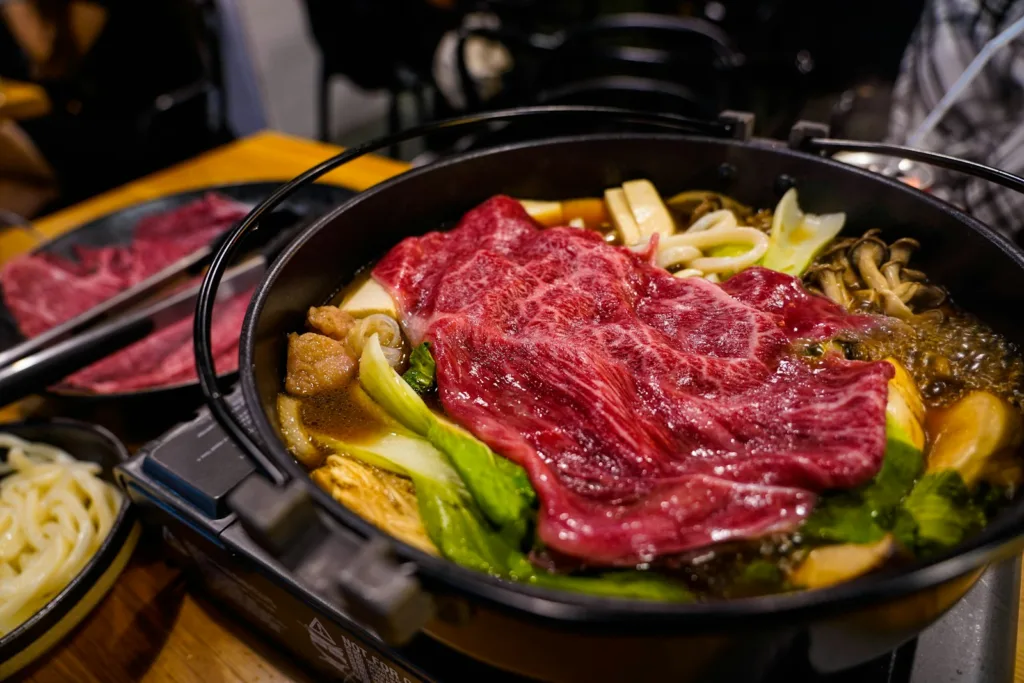It goes without saying that you should try Japanese food when you visit the country. There are many different kinds of food and regional delicacies to choose from, but if we were to choose 11 typical dishes, these are the ones that are described here.
Table of Contents
Japanese Traditional Dishes
Sushi

One of the most well-known Japanese dishes in the world is sushi. Sushi is available in a variety of forms and price points, ranging from the inexpensive and entertaining kaiten-zushi (conveyor belt sushi), where diners can enjoy sushi for around 100 yen per plate, to the more expensive and traditional Edomae sushi (Edo- style sushi), which is served at a quiet counter where diners can watch as the sushi is made.
Generally speaking, sushi is a dish of rice that has been pounded and vinegared that is topped with a neta—a piece of raw fish or shellfish. While wasabi and soy sauce are typically served with sushi, customers who prefer not to have wasabi can request “sabi-nuki,” which translates to “without wasabi.”
You can eat sushi with chopsticks or only your hands. There is one issue, though, about which you should exercise caution. Turn the sushi over and coat the neta with soy sauce instead of the rice while dipping it in the sauce. This keeps the soy sauce from seeping into the rice and destroying the flavor of the “neta” itself.
Sashimi

Another dish you just must eat is sashimi. Sashimi is raw fish that has been sliced into bite-sized pieces, much like sushi but without the rice. Whether you’re visiting Tokyo, Kyoto, or any other part of Japan, the excellent quality of the fish caught there makes it a terrific pick.
Diners can choose from dozens of variations of sashimi, just like with sushi. Maguro and other tuna kinds, salmon, mackerel, and sea bream are among the most prevalent and well-liked types. Clams, uni, sea urchins, and salmon roe are more options. Order a variety to see what fish and seafood you enjoy the most.
Soy sauce is commonly used to flavor sashimi. For added heat, you can also dab some wasabi on top of the sashimi, although it’s not necessary. Some types, such as horse mackerel, will be served with ginger rather than wasabi.
Unagi – Grilled Eel

The fish known as unagi, or eels, are primarily found in rivers. It is a dish commonly served in upscale Japanese restaurants in Japan. Additionally, there are lots of informal eateries that focus on serving up unagi dishes. You can eat unagi at restaurants by ordering kabayaki, which is unagi grilled on skewers with a special sauce made of sugar, sake, mirin, and soy sauce. These restaurants also serve unadon, which is kabayaki over white rice.
Another traditional meal you should definitely try is hitsumabushi, a specialty from Nagoya. People may be surprised by its appearance—cut-up kabayaki on top of white rice—but there are other ways to consume it, like with wasabi and green onions or as ochazuke, which is served with warm green tea or broth. Because of its high protein content and favorable digestive properties, unagi is also a popular health food that helps avoid summertime heat exhaustion.
Tempura

A dish called tempura is made of seafood, meat, and vegetables that are dipped in batter and deep-fried in oil. Typically, the batter is made of egg and flour. Before eating, tempura is typically dipped in a unique sauce known as tentsuyu. Tentsuyu is a sauce prepared by cooking a mixture of mirin, soy sauce, and broth from dried bonito or kombu. For a more refreshing taste, feel free to add grated radish or ginger.
Soba (Buckwheat Noodles)

Buckwheat flour, water, and flour are combined to make soba, a thinly stretched and noodle-like dish with a width of 1 to 2 cm. The noodles are consumed either dipped in cold soup or with hot soup poured over them after being boiled in hot water. For a wonderful soba experience, the soba broth (tsuyu), which is usually produced from dried bonito broth or kombu and seasoned with mirin and soy sauce, is essential.
Soba is a great dish any time of the year because it can be eaten hot or cold.
Udon (Wheat Noodles)

Udon is a famous and traditional Japanese cuisine that is distinguished by its thick noodles. After thoroughly kneading flour and salt water, the dough is cut into noodles. Udon is eaten with soups that contain seafood broth or with tempura added on top. The noodles are first boiled in hot water. You can have udon hot or cold, just like soba. Udon can be eaten in a variety of ways.
Onigiri – Rice Balls

It’s possible that you’ve heard of rice balls, or onigiri. Although onigiri, also known as omusubi, may merely appear to be simple rice, they frequently contain a savory filling and are covered in a seaweed sheet that has a salty texture. Families prepare them for bento lunches, which are frequently found at supermarkets and convenience stores. This is a traditional option for a small supper or snack.
Salmon, kelp, pickled plum (umeboshi), and bonito flakes are typical onigiri flavors. There are plenty of additional flavors available; Check what’s available at your local supermarket or convenience store.
While it is possible to purchase or create onigiri at home for a low cost, some restaurants provide onigiri that is prepared by chefs using premium ingredients and served as a sit-down meal. One Tokyo restaurant that has earned a Michelin star for its delicious rice balls is Onigiri Asakusa Yadoroku.
Yakitori – Grilled Chicken Skewers

Popular dish yakitori is made by slicing chicken into small pieces and grilling it on bamboo skewers. It is a great choice for a night out in Japan with friends because it is frequently seen on the menus of informal dining establishments like izakayas. It tastes extremely good with alcoholic beverages. Furthermore, there’s a strong likelihood that food vendors serving this traditional meal will be present at any Japanese festival you attend.
In restaurants, yakitori is ordered by the portion of chicken. Other kinds of meat and vegetables are also available on skewers. When it arrives, it’s normally lightly seasoned with salt, so don’t add extra sauce after the first bite. Eat directly from the skewer.
Sukiyaki

In Japan, sukiyaki is typically consumed in the fall and winter and is cooked in a shallow iron pan. In Japan, it gained popularity in the 1800s. This is a dish that may be made at home or found on restaurant menus when you’re in the mood for something filling.
Tofu, tomatoes, mushrooms, green onions, thin slices of beef, and green onions are some of the items used to make sukiyaki. After adding a few drops of sukiyaki sauce, diners broil the ingredients in the pan to make the dish themselves. To consume sukiyaki the traditional way, you dip the meat or vegetable into a dish of beaten egg after the ingredients have cooked through.
The end product is a flavorful and filling dish that pairs well with rice and will make you feel warm and fuzzy on chilly days.
Oden – Simmered Ingredients

Oden is a dish made with broth simmering a variety of ingredients. The components have a savory, salty taste and are intended to enhance the flavor of the dashi, which is often made of a mixture of shellfish and kelp. In Japan, oden has been consumed for a very long time. It is believed to have originated during the Muromachi era (1336–1573).
Fish, tofu, and mildly flavorful veggies are frequently used in oden. The thick root vegetable daikon radish is available in most stores with oden. Ganmodoki, a filling dish shaped like a circle and prepared with tofu and veggies, is another well-liked option.
Oden is sold in restaurants, food stands, and throughout the fall and winter, convenience stores also carry it. You may even purchase oden in cans from vending machines in Tokyo’s Akihabara neighborhood. Make sure to sample this famous meal while visiting Japan!
Miso Soup

Another well-known Japanese dish that is well-known for both its flavor and health benefits is miso soup. Traditionally, this soup is consumed with additional side dishes and main courses. It is typical for a conventional Japanese diet to include miso soup every day.
Miso soup is produced simply by adding Japanese dashi (a traditional blend of bonito and kelp) to the fermented miso base, which has a rich, complex flavor. Miso soup comes in hundreds of regional variations, ranging from straightforward recipes made with simply seaweed and tofu to complex ones that include crab and many veggies.
There are various varieties of miso paste, ranging from a white variety with a sweet taste to a redder one with a saltier taste. When you travel to Japan, make sure to sample some real miso soup. The majority of Japanese restaurants sell it in a variety of price points; you can have miso soup with teishoku set dinners, upscale kaiseki cuisine, and everything in between.
you may also like : 8 Extremely Weird Things That Are Exclusive To Japan
10 Must-Try Traditional Japanese Dishes – Japan Travel Guide MATCHA (matcha-jp.com)
Japanese Japanese Japanese Japanese Japanese JapaneseJapanese Japanese Japanese


2 thoughts on “Japanese 11 Traditional Dishes You Must-Try”